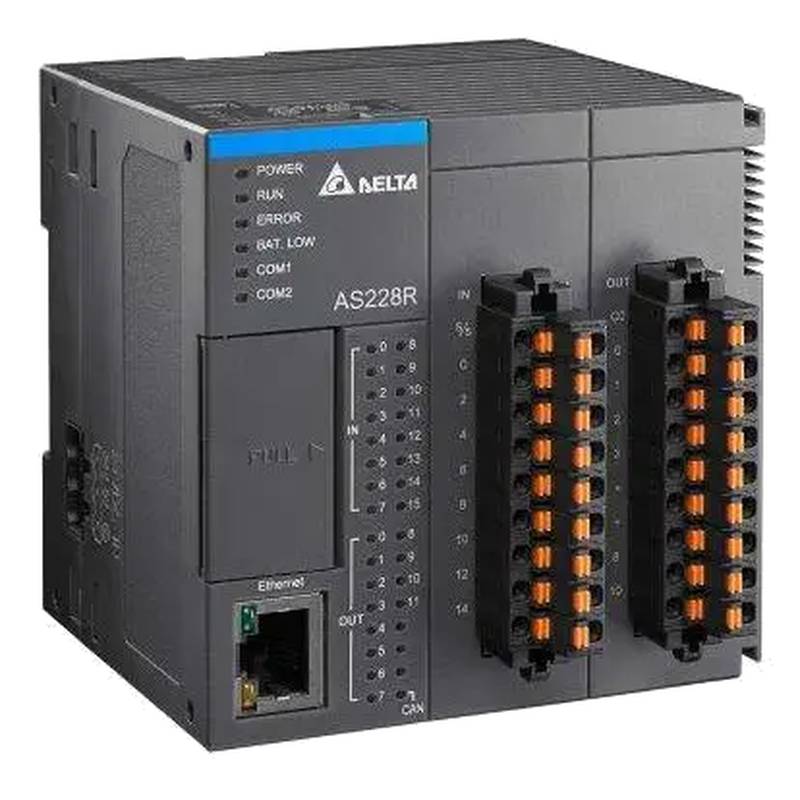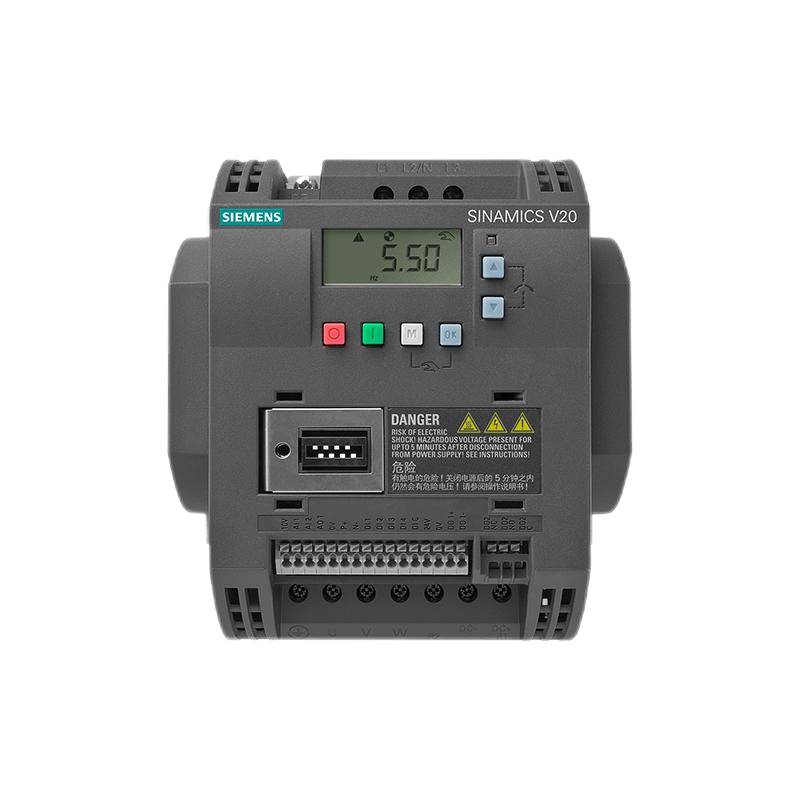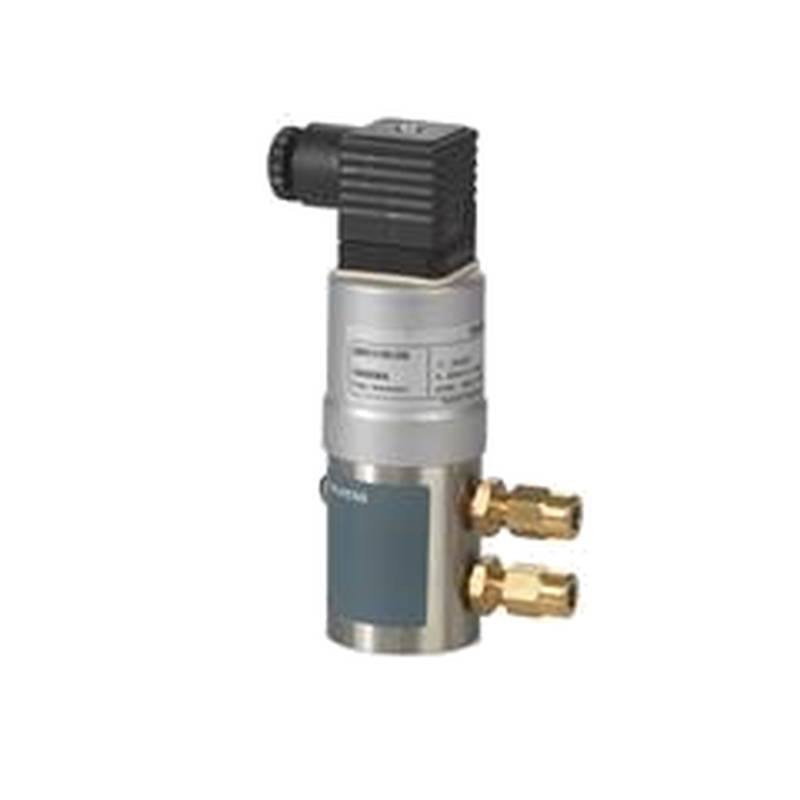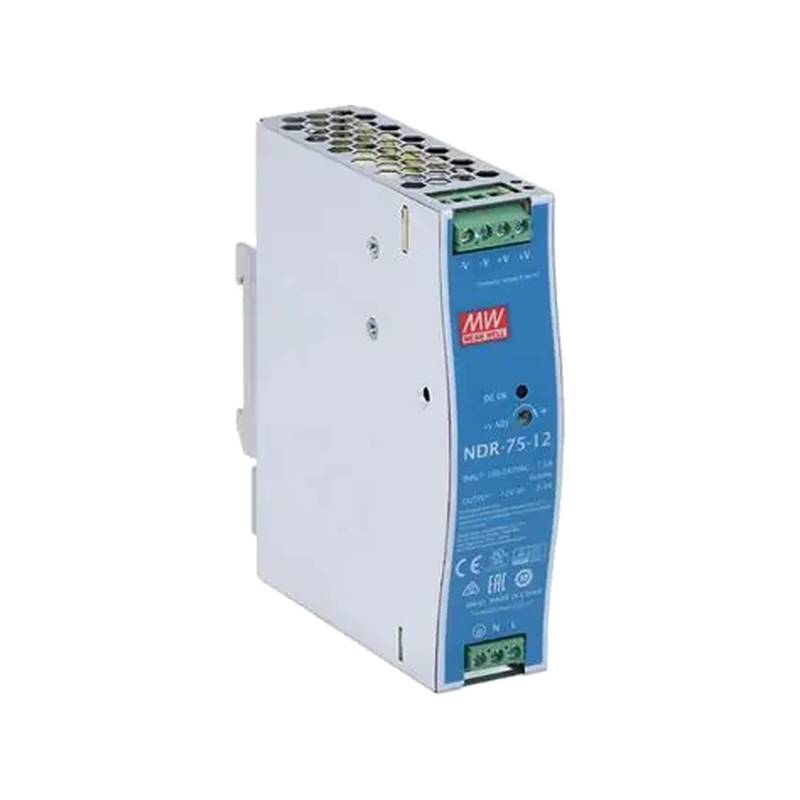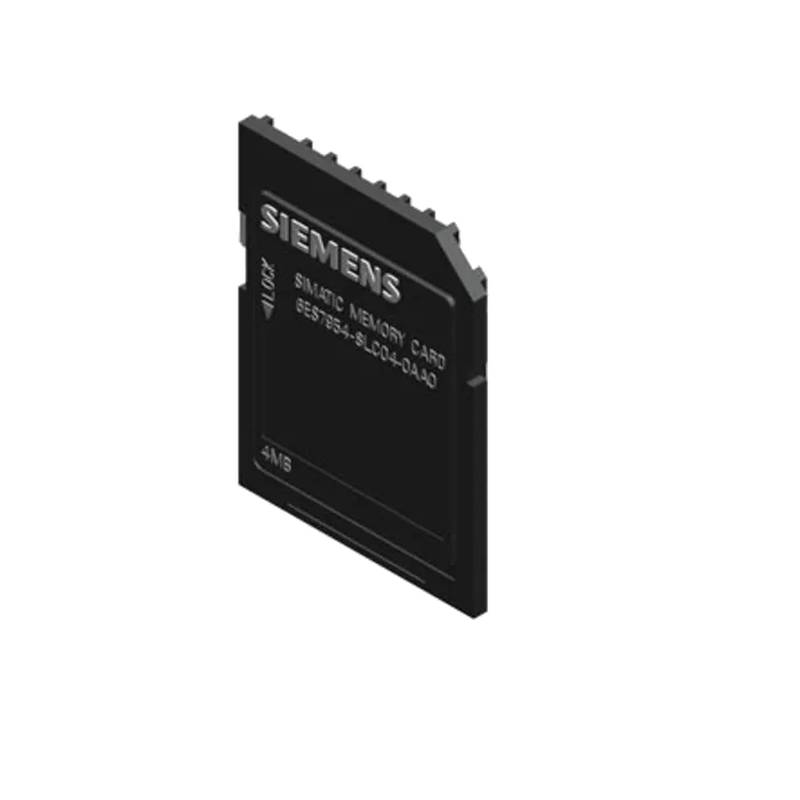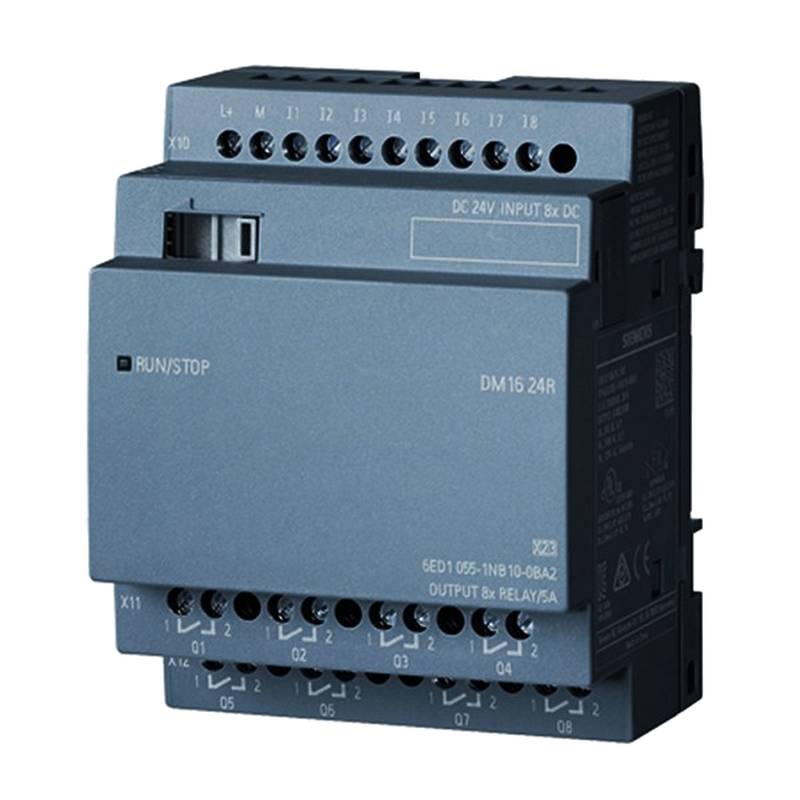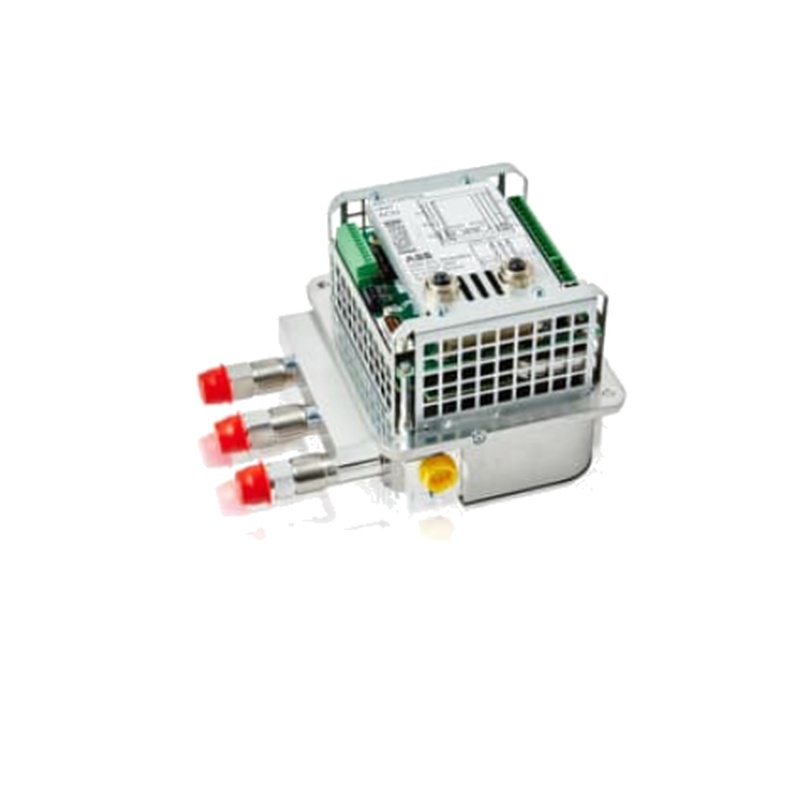
The Siemens 5SU9356-2CN16 is a highly reliable Residual Current Circuit Breaker with Overcurrent Protection (RCBO) engineered for robust safety in electrical installations. This compact 1P+N device offers integrated earth leakage and overload protection, featuring a 16A current rating and a 30mA tripping sensitivity. Its D-curve characteristic ensures it can handle inrush currents associated with inductive loads, making it an ideal choice for demanding industrial and commercial applications. The Siemens 5SU9356-2CN16 provides crucial safeguarding against electrical shocks and fire hazards caused by earth faults, short circuits, and overloads, ensuring personnel safety and equipment integrity.
Product Specifications
| Specification | Value |
| :-------------------------- | :-------------------------- |
| Product Type | RCBO (Residual Current Circuit Breaker with Overcurrent Protection) |
| Siemens Type Designation | 5SU9356-2CN16 |
| Rated Current (In) | 16 A |
| Rated Tripping Current (IΔn)| 30 mA |
| Number of Poles | 1P + N (1 Pole + Neutral) |
| Tripping Characteristic | D |
| Breaking Capacity (Icn) | 6 kA |
| Voltage Rating | 230/240 V AC |
| Frequency | 50/60 Hz |
| Protection Type | Overload, Short-circuit, Earth Leakage |
| Terminal Type | Screw Terminals |
| Mounting Type | DIN Rail (35 mm) |
| Ambient Temperature Range | -25 to +45 °C |
| Compliance | IEC/EN 61009-1, IEC/EN 60898-1 |
Core Features & Market Positioning
The Siemens 5SU9356-2CN16 distinguishes itself through its integrated approach to electrical protection, consolidating the functions of a miniature circuit breaker (MCB) and a residual current device (RCD) into a single, space-saving unit. This dual functionality streamlines panel building and reduces overall system complexity and cost. Its D-curve characteristic is a significant market advantage, providing enhanced immunity to nuisance tripping caused by the high inrush currents typical of motors, transformers, and other inductive loads commonly found in industrial settings. This ensures operational continuity while maintaining stringent safety standards. The product’s adherence to international standards like IEC/EN 61009-1 underscores its reliability and suitability for global markets, positioning it as a trusted component for critical infrastructure protection.
Key Application Scenarios
This Siemens RCBO is exceptionally well-suited for protecting circuits in environments where inductive loads are prevalent. Common applications include motor control circuits in manufacturing plants, power distribution to heavy machinery, and protection of lighting systems with large transformers. It is also ideal for installations in workshops, laboratories, and areas with significant electrical equipment where reliable protection against earth faults and overloads is paramount. The 16A rating and 30mA sensitivity make it a versatile choice for branch circuits requiring precise protection against electric shock, such as those found in commercial buildings, healthcare facilities, and residential complexes with higher electrical demands.
Practical System Integration Guidance
Integrating the Siemens 5SU9356-2CN16 into existing or new electrical panels is straightforward due to its standard DIN rail mounting. Ensure the main power supply is de-energized before commencing installation. Connect the incoming live conductor to the designated line terminal and the incoming neutral conductor to the neutral terminal. The outgoing load conductors are then connected to the respective output terminals. Crucially, the earth leakage sensitivity is factory set at 30mA and cannot be adjusted. Verify that the upstream overcurrent protection, if any, is rated appropriately to coordinate with the 6kA breaking capacity of the RCBO. Proper grounding of the entire system is essential for the effective operation of the earth leakage protection function.
Operation and Risk Mitigation
The Siemens 5SU9356-2CN16 operates by continuously monitoring the current flowing through the live and neutral conductors. If an imbalance is detected—indicating current leakage to earth—the device trips rapidly, typically within milliseconds, interrupting the circuit. Overload protection is achieved through a thermal tripping mechanism that responds to sustained overcurrents, while short-circuit protection utilizes an electromagnetic trip for instantaneous interruption during fault conditions. To mitigate risks, regular testing of the RCBO’s functionality using its integrated test button (typically labeled 'T') is recommended, usually on a monthly basis. This test simulates an earth fault and confirms that the tripping mechanism is operational. Any signs of damage, discoloration, or unusual behavior warrant immediate replacement of the unit.
Scalability & Long-Term Value
The Siemens 5SU9356-2CN16 offers excellent long-term value through its compatibility with the broader Siemens SENTRON product portfolio, enabling seamless integration into larger Siemens electrical distribution systems. While this specific RCBO is a fixed-configuration unit, scalability in terms of protection levels can be achieved by selecting appropriate upstream and downstream protective devices within the SENTRON range. Its robust construction and adherence to stringent quality standards ensure a long operational lifespan, reducing the need for frequent replacements and minimizing downtime. For facilities looking to leverage digital solutions, integrating this RCBO within a smart electrical infrastructure allows for remote monitoring and data logging capabilities, contributing to predictive maintenance strategies and overall system efficiency.
Frequently Asked Questions
1. What is the primary function of the Siemens 5SU9356-2CN16 RCBO?
This RCBO provides essential combined protection against electrical hazards. It safeguards circuits from overloads, short circuits, and dangerous earth leakages, preventing potential fires and electrical shocks.
It acts as a crucial safety device, ensuring the integrity of both electrical systems and the personnel operating them. The integrated design simplifies electrical panel layouts and installation processes.
The device's D-curve characteristic is particularly beneficial for circuits with high inrush currents, such as those powering motors or transformers, minimizing nuisance tripping.
2. How does the D-curve characteristic of the 5SU9356-2CN16 benefit my application?
The D-curve allows the RCBO to withstand significantly higher inrush currents compared to standard B or C curve devices. This is critical for inductive loads like motors, which draw a surge of current upon startup.
By tolerating these temporary surges, the RCBO prevents unnecessary tripping, ensuring the continuous operation of your equipment. This reliability is vital in industrial and commercial settings.
Therefore, applications involving motor-driven machinery, transformers, or other inductive equipment will benefit greatly from the 5SU9356-2CN16's robust performance and reduced susceptibility to false shutdowns.
3. What is the significance of the 30mA tripping sensitivity on this RCBO?
A 30mA tripping current is considered the threshold for protection against electric shock for humans. If leakage current exceeds this level, it indicates a hazardous situation.
The RCBO will rapidly disconnect power when such a leakage is detected, significantly reducing the risk of severe injury or fatality from electrocution. It is a vital safety feature for personnel protection.
This sensitivity ensures that the device provides a high level of personal safety, meeting stringent electrical safety regulations for installations where direct contact with conductors is a possibility.
4. Can the Siemens 5SU9356-2CN16 be used for both residential and industrial settings?
Yes, the 5SU9356-2CN16 is versatile enough for both environments, provided the application matches its specifications. Its robust design and D-curve make it particularly suited for industrial use.
In residential settings, it excels in circuits with high starting current devices like air conditioners or pumps. It ensures safety and reliability across various domestic power needs.
However, its industrial-grade construction and features mean it offers superior protection and durability, making it a strong choice for demanding commercial and manufacturing applications.
5. What is the breaking capacity of the Siemens 5SU9356-2CN16?
The breaking capacity of this RCBO is rated at 6 kA. This indicates the maximum fault current it can safely interrupt without sustaining damage to itself.
This 6kA rating is sufficient for many standard residential and commercial electrical installations. It ensures the device can handle typical short-circuit fault currents effectively.
It is crucial to ensure that the prospective fault current at the installation point does not exceed this 6kA rating for safe and reliable operation of the device.
6. How do I test the functionality of the 5SU9356-2CN16 RCBO?
Locate the test button, usually marked with a 'T' on the front of the device. Ensure the circuit is live and operational before testing.
Press the test button firmly. If the RCBO is functioning correctly, it will trip, disconnecting the power to the protected circuit.
Manually reset the RCBO by lifting the switch handle. Regular testing, typically monthly, is essential to ensure the safety mechanism remains operational.
7. What are the advantages of a 1P+N (1 Pole + Neutral) RCBO?
A 1P+N RCBO combines protection for both the live conductor and the neutral conductor in a single unit. This simplifies wiring and reduces the number of components needed in a distribution board.
It ensures that both live and neutral are disconnected simultaneously when a fault occurs, enhancing safety compared to single-pole devices that only switch the live wire.
This integrated switching of neutral is particularly important for ensuring complete isolation of the circuit during fault conditions, preventing residual voltage issues.
8. Is the Siemens 5SU9356-2CN16 compatible with other Siemens SENTRON components?
Yes, the 5SU9356-2CN16 is part of the Siemens SENTRON protection devices series. It is designed for seamless integration within the broader Siemens electrical infrastructure.
This compatibility allows for consistent design, installation, and operation when used alongside other SENTRON components like miniature circuit breakers, surge protective devices, and switchgear.
Leveraging the SENTRON ecosystem ensures system reliability, standardization, and access to a comprehensive range of electrical protection and distribution solutions.
9. What is the typical lifespan of the Siemens 5SU9356-2CN16 RCBO?
With proper installation and regular testing, these RCBOs are designed for a long operational lifespan, often exceeding 15-20 years. Siemens products are known for their durability and reliability.
The lifespan depends on factors such as the number of tripping operations, environmental conditions, and adherence to maintenance schedules. Overloading or frequent severe faults can reduce its service life.
Regular functional tests ensure its continued reliability, but for critical applications, periodic professional inspection might be advisable to confirm its performance over extended periods.
10. What are the implications of exceeding the 6kA breaking capacity?
Exceeding the 6kA breaking capacity means the RCBO may not be able to safely interrupt a severe short-circuit fault. This can lead to catastrophic failure of the device.
Failure to interrupt the fault current can result in significant damage to electrical equipment, wiring, and the distribution panel itself. It also poses a severe risk of fire and electric shock.
It is imperative for an electrical engineer or qualified electrician to calculate the prospective fault current at the installation point and ensure it remains below the device's rated breaking capacity for safe operation.
















